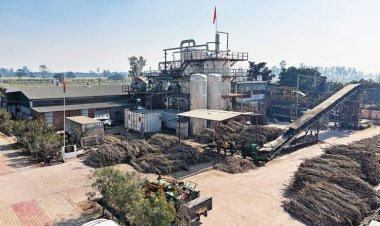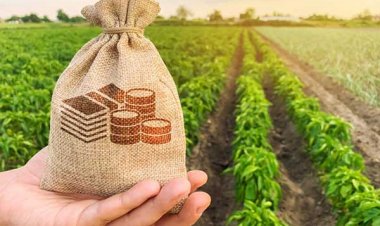Is onion going to be the next tomato?
Onion prices, that currently have around Rs. 25-30 per kg, could rise significantly to Rs 60-70 per kg in the retail market starting early September on a likely shortfall in supplies, the rating agency said in a research report. The prices, however, should soften as supplies improve in October.
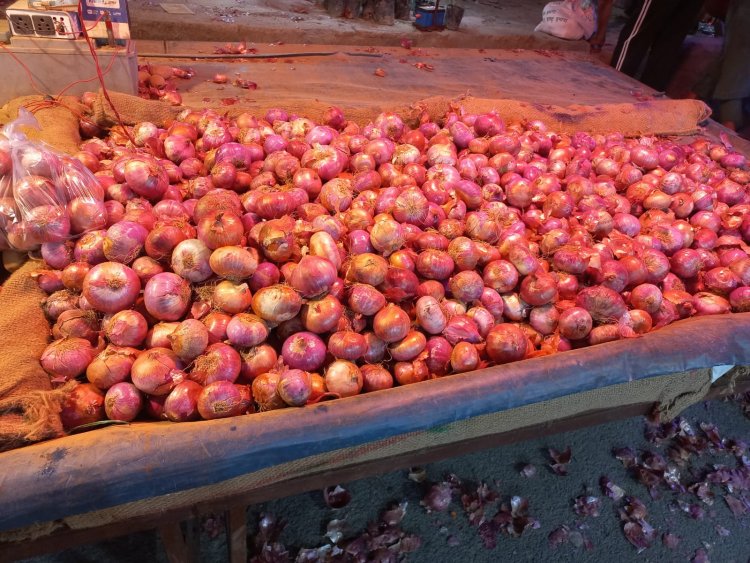
Onions have made everyone weep, literally. Be it the farmer or the purchaser - all have experienced it. And the Government of the day has borne its worst brunt, especially if the crisis take place around elections.
The crop is highly unpredictable. There is no denying that onion has had a long history of price fluctuations caused by demand and supply across the globe. An expected supply crunch could help farmers, but hurt retail buyers. This scenario could be seen in the second quarter of this fiscal, going by a CRISIL report.
Onion prices, that currently have around Rs. 25-30 per kg, could rise significantly to Rs 60-70 per kg in the retail market starting early September on a likely shortfall in supplies, the rating agency said in a research report. The prices, however, should soften as supplies improve in October.
“Rabi stocks in the open market are expected to decline significantly by the end of August instead of September, extending the lean season by 15-20 days, which is likely to expose the market to tightened supplies and high prices,” Crisil noted in the report. It attributed unusual weather conditions to disrupted traditional supply schedules. In addition, unseasonal rainfall in these regions in March affected the quality of onions and reduced their shelf life to 4-5 months from six months, raising storage concerns and triggering panic selling by farmers.
According to the report, high temperatures led to early maturity of the rabi crop across the key growing states of Maharashtra (49 per cent of the total share), Madhya Pradesh (22 per cent), and Rajasthan (6 per cent) in February. The rabi crop, which is usually brought to the market in March, was harvested early and made available in February, coinciding with late Kharif supplies and leading to a glut in the market. The rabi stock is usually stored to cater to demand until end-September, after which the Kharif crop arrives to fill the gap.
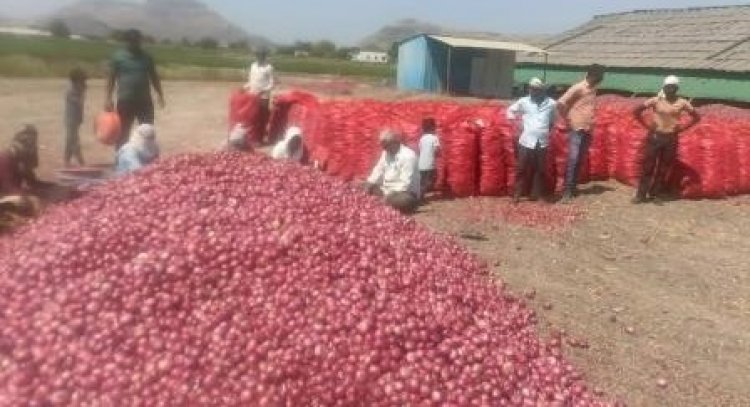
However, due to the reduced shelf life of rabi onion and the panic selling in February-March, the supply-demand imbalance is expected to reflect in onion prices towards the end of August, during the lean patch, Crisil said. But, there is a silver lining. Onion supplies should improve once the Kharif arrivals start in October, leading to softer prices. “But this lower realisation in onions has created a negative sowing sentiment among farmers for the Kharif 2023 onion crop. As a result, we expect acreage to decline 8 per cent this year, and kharif production of onion to fall 5 percent on-year,” the report said.
However, a major slump seems unlikely as annual production is estimated at 29 million metric tonnes, 7 per cent higher than the average of the past five years (2018-22). The report comes at a time when tomato prices have shot up to a whopping Rs.250-300 a kilo. Experts say tomato prices are expected to stabilise by the start of September.
Quite recently, when the sowing of kharif onion was underway, the consumer affairs ministry had asked the agriculture ministry to give more incentive and impetus to kharif onion during the festival period in the winter season to avoid any spike in prices. Normally, onion prices shoot up during the winter season, as stored rabi onion gets exhausted and fresh kharif onion cannot be stored.
Consumer Affairs Secretary Rohit Kumar Singh said the kharif onion plays a critical role during the festival period in winter. "To ensure availability during that time, we have requested the agriculture ministry to give more incentive and impetus to kharif onions," he said. The country's onion production is estimated at 319 lakh tonne in the ongoing 2023 calendar year, slightly lower than 324 lakh tonne in the previous year.
Onion is produced in three seasons -- rabi, kharif and late kharif. The rabi crop of 219 lakh tonne has already arrived, the remaining 100 lakh tonne will come in kharif and late kharif, which will meet the onion demand in the winter season. "Out of 319 lakh tonne, a big supply of 219 lakh tonne from rabi season is already with us. From this, the government has procured 3 lakh tonne for buffer stock. The remaining 100 lakh tonne will arrive August-November," he said.
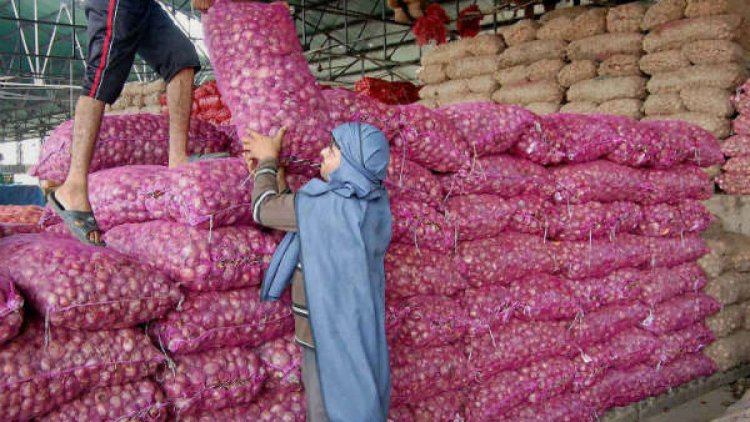
"The moment onion availability is ensured throughout the calendar year, prices will fall. These crops are seasonal and at some point, there will be a deficit. If you spread the production plus storage, the spike in prices can be avoided," he added.
In February this year, a Japanese discount store had announced it would be accepting onions as payment in a few of its stores on select dates. In other words, onion had attained currency status as its prices had skyrocketed due to supply crunch. In fact, onion has had a long history of price fluctuations caused by demand and supply across the globe. Data for the past decade shows how onion prices have been volatile in India as well, largely owing to climatic conditions that have played "now-an-ally, now-a-foe" to the crop.
Rabi contributes the lion’s share (70%) of the total onion produce and feeds our population from March through September, while the kharif produce comes to the rescue during the lean patch from the end of September to December. Thus, the rabi onion, with a longer shelf life (5-7 months) compared with kharif/late kharif onions (1-1.5 months), has the larger onus of maintaining supply-demand dynamics.
However, the kharif onion often succumbs to climate vagaries and has been a critical determinant of price fluctuations over the years, says the Crisil report. The acreage under onion in rabi 2023 (December 2022-January 2023) is estimated to have been lower on year by 3-5%, led by 25-27% lower realisation witnessed by farmers in the previous season (January-December 2022). This is estimated to have resulted in 6% lower output on-year.
In February, when the rabi crop was in l the later stage of bulb development across key growing states such as Maharashtra (49% of the total share), Madhya Pradesh (22% of the total share), and Rajasthan (6% of the total share), high temperature conditions reportedly led to early maturity of crop in the field.
Furthermore, unseasonal rainfall in the key growing regions during March affected the quality of onions and reduced the shelf life of rabi onion from 6 months to 4-5 months, raising storage concerns and induced panic selling among farmers. Thus, the rabi crop, which is conventionally scheduled to be brought in the market from March, was harvested early and started trading in February, coinciding with late kharif supplies, leading to a supply glut in the market.
This is reflected in the surge in arrivals in February, which was 12% higher on-year, eventually leading to prices crashing 32% on-year during the month. Similarly, prices were also lower on-year by 21%, 13% and 2% in March, April, and May, respectively. In June, though, prices witnessed a slight growth on-month with 17% lower arrivals on-year, reportedly led by hoarding of the produce.
For the rabi season (January-June) overall, the rabi and late kharif crops together caused market prices to crash by 18%. The glut in the market led to the lowest onion prices in five years during the second quarter of the calendar year. Low shelf life of 2023 rabi onion to extend lean season. Conventionally, the stored rabi stock caters to demand until end-September, post which the kharif arrival comes in to fill the gap. But the tale might not be the same this year.
Owing to reduced shelf life of rabi onion by 1-2 months and panic selling that ensued in February-March 2023, rabi stocks in the open market are expected to decline significantly by the end of August instead of September, extending the lean season by 15-20 days, which is likely to expose the market to tightened supplies and high prices.
The supply-demand imbalance is expected to reflect in onion prices towards end-August. As per our ground interactions, prices are expected to show significant increase from early September in the retail market, reaching up to Rs 60-70/kg during the lean patch.
However, prices will remain below the highs of 2020. Expectations October onwards, after the lean season. Tight onion supplies in September will ease once kharif arrivals start from October, leading to softer prices. During January- May this year, a fall in onion prices had offered some relief to consumers facing significantly costlier cereals, pulses and other vegetables.
But this lower realisation in onions has created a negative sowing sentiment among farmers for the kharif 2023 onion crop. "As a result, we expect acreage to decline 8% this year, and kharif production of onion to fall 5% on-year. However, annual production is foreseen at 29 million metric tonne (MMT), a good 7% higher than the average of the past five years (2018-2022)," the Crisil said.
So a major supply crunch is unlikely this year despite lower kharif and rabi output. How the rainfall pans out in August and September will determine transplantation and bulb development of the onion crop. The price movement in the festive months (October-December) is expected to stabilise, compared with high prices in September.
Trade sources said in view of the expected demand-supply gap, government procurement agencies such as NCCF, MMTC and NAFED, together with farmer producer organisations and cluster-based business organisations, are expected to release 3-4 lakh metric tonne of onion stock in the market to temper prices.
The prices, however, are expected to remain elevated on-year until the arrival of late kharif varieties in the market, in a throwback to the tomato story for Indian households.



 Join the RuralVoice whatsapp group
Join the RuralVoice whatsapp group



































